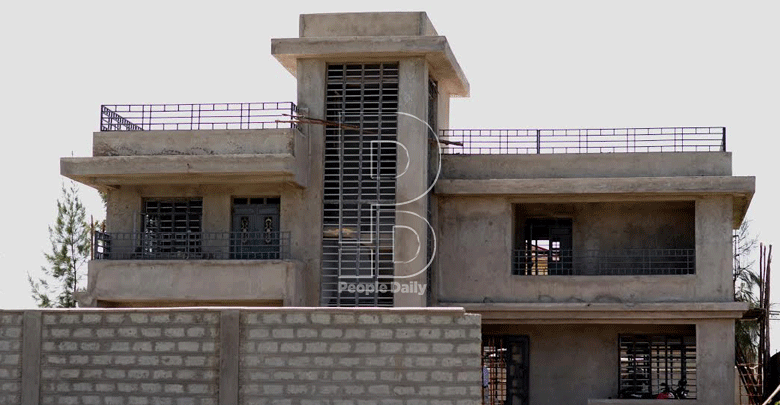Flat roof house style returns from the past with unique twist

As a symbol of modernity in the mid 19th century, this roofing technique was common among communities living in deserts. However, its once-lost charm and versatility have been attractive enough to make a grand comeback.
Milliam Murigi @millymur1
If you have visited the coast, you might have noticed flat-roofed houses, which are an influence from Arab architecture who visited the region during the slave trade period.
These roofs, once a preserve of the coastal people, seem to be gaining traction in other parts of the country in recent times.
Local architects, influenced by global trends and changing taste and preferences of an informed clientele, are ditching slopped roofs in favour of flat roofs, but with a tinge of contemporary architectural design.
Homeowners’ appetite for flat roofs, realtors say, has also grown exponentially.
Farrowson Muriithi, managing director, Pacific Reality Investment (PRI), a construction company that specialises in designing and construction of property points out that additional functionality, their edgy and modern feel are among the reasons these roofs are gaining popularity and garnering designer accolades.
He says climate change is another major contributor to this trend; they beat sloppy roofs when it comes to thermal performance.
Many flat roofs rely on innovative insulation methods and use special materials that lower overall heating and cooling demand.
These materials perform highly on thermal insulation. “With shrinking plot sizes, most people are going for flat roofs, because they increase outdoor usable space,” he says, adding “They can become incredible outdoor lounge space to barbecue or simply relax.
It is also an ideal location to set up a garden, solar panels to save on electricity, or any other uses.”
Some homeowners, Muriithi explains, opt to construct a swimming pool, set up a gym, and even have a tennis court on top of the roof, as the pitch of a flat roof is gentle enough to allow the surface to be used for such activities.
Due to design features, however, Muriithi reveals it would be extremely hard for this kind of house to withstand the vagaries of heavy rain.
He says leakages can occur if the waterproofing aspect is not well done. Flat roofs need meticulous waterproofing, which at a gross value is more expensive than medium to low-end pitched roofing.
To ensure this never happens with their houses, they use terrazzo which is waterproof to cover the roof floor.
“You cannot get fake terrazzo’s in the market, yet you can get fake waterproofing cement,” says Muriithi.
They also do proper leveling and install added mechanisms to address drainage since flat roofs do not drain as efficiently as roofs with pitch. “Another disadvantage is that one cannot collect rainwater.
To solve this, some people are going for semi-pitched flat roofs where the lower side captures the normal roofing sheets for water collection,” he says.
“Developers should not compromise on height of flat-roofed houses to be able to achieve the best interiors.
Additionally, don’t trade-off on waterproofing products, because the investment will be expensive in the long run,” he adds.
On the cost of construction, Muriithi says a flat roof house is slightly more expensive compared to a pitched roof house because of its maintenance needs.
The structural concept of a flat house also costs more due to the materials required.
“The cost difference is around 10 per cent to 15 per cent. My four-bedroom flat roof house is going for Sh9.5 million,” he says.
Should iron sheet manufacturing companies worry about this new shift to frat roofs?
Muriithi says demand for iron sheets will always be there since most Kenyans and real estate developers, especially in rural areas still prefer pitched.
Previoulsy, it was believed that flat roofs were only meant from maisonettes as their height is higher compared to bongalows, but this has changed as bungalows too are being designed and constructed to have flat roofs.
“In urban areas maisonettes account for 70 per cent of the total buildings. But in rural areas bungalows take the lead,” he says.
Other companies that have ditched pitched for flat roofs in their developments, include Mzizi Africa Homes and the Nyumbani Concept.
George Mburu, Mzizi Africa Homes Chief Executive Officer, says the company decided to adopt new house designs for its projects to tap into a growing population of savvy millennial buyers.
“All our units will, from this year henceforth, come with flat roofs to provide more outdoor space for recreation.
The new design is inspired by the creative nature and desire of this generation to live in a better place.
The extra spaces give them flexibility they need to personalise the houses the way they want. We are putting in modern features that suit their lifestyle,” says Mburu.












